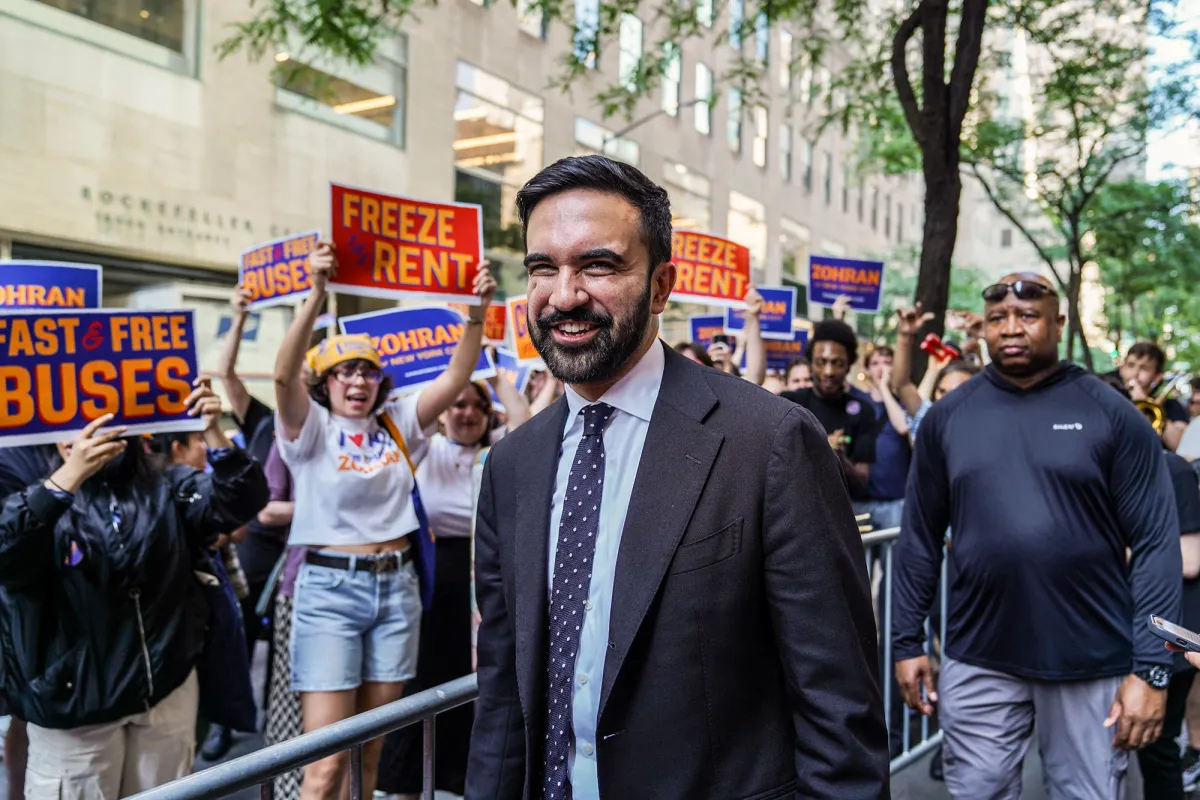American politics got a jolt this past June when a largely unknown 33-year-old local legislator defeated a former three-term governor in the Democratic primary for mayor of New York City.
Voters will choose the next mayor of New York City in the November general election, but the June result has already made waves.
While pundits have offered many explanations, two stand out: the local legislator’s highly effective strategic messaging and his savvy, culturally fluent use of social media.
These are more than campaign tactics—they are lessons in modern political communication that apply to both branding and marketing.
The Upset
The upset came when Zohran Mamdani, defying polls and being outspent nearly 3-to-1, soundly defeated Andrew Cuomo, the former governor of New York State who was seeking a political comeback. Although Cuomo had resigned four years earlier following a sexual harassment investigation, most observers believed he would easily win.
Mamdani proved otherwise.
What made Mamdani so unusual was his total rejection of conventional political campaigning.
A grassroots organizer, Mamdani ran on a bold leftist platform that included rent cancellation, free public transit, and state-run grocery stores—positions well outside the mainstream.
Instead of relying on big donors and consultants, Mamdani built a digital-first, volunteer-driven campaign powered by TikTok-native content and cultural creators.
As a Muslim, Ugandan-born son of Indian immigrants who became a U.S. citizen just seven years earlier, he represented not just a new generation—but a different political voice.
But it wasn’t just his bio or his policies that made the difference. It was the way he communicated.
Messaging that Mattered
Mamdani’s message succeeded because it blended the emotional clarity of populism with the tone and fluency of digital culture, reaching younger, economically insecure voters who often feel excluded from traditional politics.
He avoided policy jargon—no talk of “mixed-income housing” or “stakeholder engagement.” Instead, he offered direct, visual language: “free buses,” “no rent hikes,” “public grocery stores.” These ideas were not just easy to understand as they were emotionally resonant and culturally grounded.
At the heart of the campaign was a single, powerful message, condensed into a short memorable phrase: “You should be able to live in the city you grew up in.”
This reframed housing from a policy debate that Cuomo wanted to have to a question of dignity, belonging, and identity. It struck a nerve with renters, immigrants, and students fearful of displacement.
Rather than inventing a new language, Mamdani reclaimed familiar ones—like “rent freeze” and “public goods”—and delivered them in the tone of a conversational manifesto.
As one strategist put it, his style was “socialism in the language of roommates.”
His approach was not wholly original; it was a revival of older American progressive traditions, modernized for today. What distinguished Mamdani was how he infused that tradition with platform-native storytelling—like casually discussing ranked-choice voting in Urdu while drinking chai tea—or jumping into a freezing lake in a suit to make a point about freezing rents.
Mamdani’s values-based appeals emphasized belonging over credentials, and his cultural fluency—immigrant, Muslim, multilingual, queer-inclusive—wasn’t ornamentation. It was the voice of the communities he came from.
Each layer of his messaging worked together:
- Emotionally: “You should be able to live where you were born.”
- Politically: “We’ll stop rent hikes and make buses free.”
- Culturally: “Let’s talk politics over chai.”
- Morally: “Housing is a human right.”
In short, Mamdani did not invent a new message. He reshaped universal concerns in a voice that felt urgent, sincere, and unmistakably of the moment.
Strategic Lessons for Politics, Branding, and Marketing
Mamdani’s campaign is more than a political case study—it’s a masterclass in strategic communications:
- Clarity Beats Complexity
Just like great brands, Mamdani didn’t try to explain everything. He focused on memorable, visual messages— “free buses” communicates more than a 10-point transit plan ever could.
- Emotional Connection is Everything
His core message tapped into identity and belonging, not just policy. In branding, this is the difference between listing features and evoking a feeling. Mamdani sold a vision, not a program.
- Platform-Native Storytelling Wins
He met people where they were—on TikTok, in group chats, in multilingual content that felt personal. Successful brands and campaigns don’t just distribute content; they shape it in the voice of the platform.
- Authenticity Over Optics
In an age of overproduced messaging, Mamdani’s authenticity stood out. His voice reflected lived experience, not branding exercises. People sensed it—and shared it.
- Narrative Cohesion Matters
His message was multi-layered but unified—emotional, political, moral, cultural. In marketing, this is brand architecture: many parts, one voice.
In an era where attention is scarce and trust is eroding, Mamdani’s win is a reminder that effective messaging is not just about being heard—it’s about being believed. And in that, there’s a lesson for every campaign, every brand, and every voice trying to break through the noise.

Strategic communications specialist (Harvard Kennedy School) | Story School Expert

Feeling inspired ?
Take some time to write a paragraph about something you’re proud of and sometimes find underestimated and share it with us at storyschool@um6p.ma



